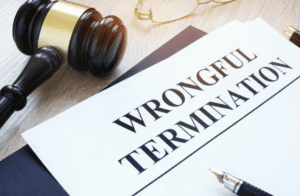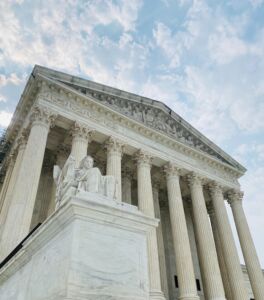 Social media is now a part of society, but employers are still trying to figure out how to control what their employees post. We’ve discussed social media use protections that employees may enjoy in some of our earlier blog posts, such as “Can I Get Fired for What I Post on Facebook or Twitter?” and “Can I Be Fired for My Political Activities Outside of Work?”
Social media is now a part of society, but employers are still trying to figure out how to control what their employees post. We’ve discussed social media use protections that employees may enjoy in some of our earlier blog posts, such as “Can I Get Fired for What I Post on Facebook or Twitter?” and “Can I Be Fired for My Political Activities Outside of Work?”
One of the issues we addressed was the National Labor Relations Act of 1935 (NLRA) and the protections it provides to the collective action of employees, especially as it’s been applied to social media.
Table of Contents
ToggleThe NLRA
The NLRA is an important labor law that guarantees employee rights with respect to unionization, collective action, and collective bargaining. These rights are enforced by the National Labor Relations Board (NLRB).
Two particular sections of the NLRA, Sections 7 and 8, guarantee employees the right to self-organize for the purpose of collective bargaining. These sections also restrict employers from interfering with their employees’ attempts to exercise that right to self-organize.
A few years ago, a notable case first went before the NLRB after an employee who made a profanity-filled Facebook post was fired. The NLRB ruled that the firing was improper under the NLRA since the post’s primary purpose was not merely to complain but rather to encourage his fellow employees to unionize. That decision was recently upheld by the United States Court of Appeals for the Second Circuit in NLRB v. Pier Sixty, LLC.
The Facts of the Case
Hernan Perez worked as a server for Pier Sixty, LLC (“Pier”), a catering company. On October 27, 2011, Pier’s employees held a vote regarding whether they should unionize. One of the reasons for unionizing was to increase the level of respect Pier’s management had for its employees. Despite Pier threatening to fire employees who engaged in union activities, the employees ultimately voted to unionize.
However, before the election occurred, Perez was working at a catered event when his supervisor, Robert McSweeney, addressed him in a way that Perez viewed as disrespectful. During his authorized work break, Perez used his personal smartphone to post the following missive about McSweeney on his own Facebook page:
Bob is such a NASTY MOTHER F—– don’t know how to talk to people!!!!!! F— his mother and his entire f—— family!!!! What a LOSER!!!! Vote YES for the UNION!!!!!!!
A few weeks later, after the vote to unionize, this post was brought to the attention of Pier’s management. Perez was subsequently fired.
Perez’s Legal Case
Perez first filed a “charge,” or complaint, with the NLRB claiming that Pier retaliated against him for engaging in protected concerted activity. An administrative law judge ruled in favor of Perez, concluding that Pier had violated Section 8 of the NLRA when it fired Perez.
When Pier appealed this ruling, a three-member panel of the NLRB affirmed the administrative law judge. The panel applied a nine-factor “totality of the circumstances” test that was specifically created for use in social media cases where the employee has criticized his or her employer. Those factors are:
- the existence of any antiunion hostility,
- whether the employee was provoked into making the social media post,
- whether the post was rashly or deliberately made,
- where the posting occurred,
- the specific subject matter of the social media post,
- the nature of the social media content,
- whether the employer considered similar conduct from other employees to be offensive,
- whether the employer had a specific policy prohibiting content similar to the employee’s social media post, and
- whether the discipline imposed by the employer was also imposed on other employees for similar offenses and was reasonable given the employee’s social media conduct.
Pier appealed the NLRB panel decision to the Second Circuit, which again affirmed the original ruling and found that Pier had unlawfully retaliated against Perez.
Protections Under the NLRA
As discussed above, Sections 7 and 8 of the NLRA allow employees to engage in collective action and prohibit an employer from firing an employee who participates in these protected activities. However, if the employee acts in “such an abusive manner” that it rises to the level of being “opprobrious,” the employee may lose his or her NLRA protections.
The Second Circuit concluded that Perez’s conduct was protected based on the following reasons:
- Despite its crudeness, the overall message of Perez’s post dealt with a workplace issue and advocated for unionization.
- Perez’s post was not made to Pier’s customers or created in a way that interfered with his job duties at the catering event.
- Pier had encountered profanity-laden comments on social media from other employees but had never fired an employee for that conduct before Perez.
The Second Circuit acknowledged that Perez’s Facebook post was “vulgar and inappropriate” and pushed the limits of NLRA protections. However, it did not rise to the level of “opprobrious conduct” and was therefore protected by the NLRA.
Summing It Up
- The NLRA allows employees to self-organize so they may collectively bargain or engage in other concerted actions to improve their employment conditions and terms.
- The NLRA prohibits employers from interfering with employees who try to take collective action, including when employees use social media to discuss workplace concerns and issues.
- The NLRB enforces the NLRA and uses a nine-factor “totality of the circumstances” test to determine whether an employee’s social media post is protected under the NLRA.
Have you been retaliated against at work for posting on social media about unionization efforts? Please contact our office so we can help you assess your options and decide what to do next.





